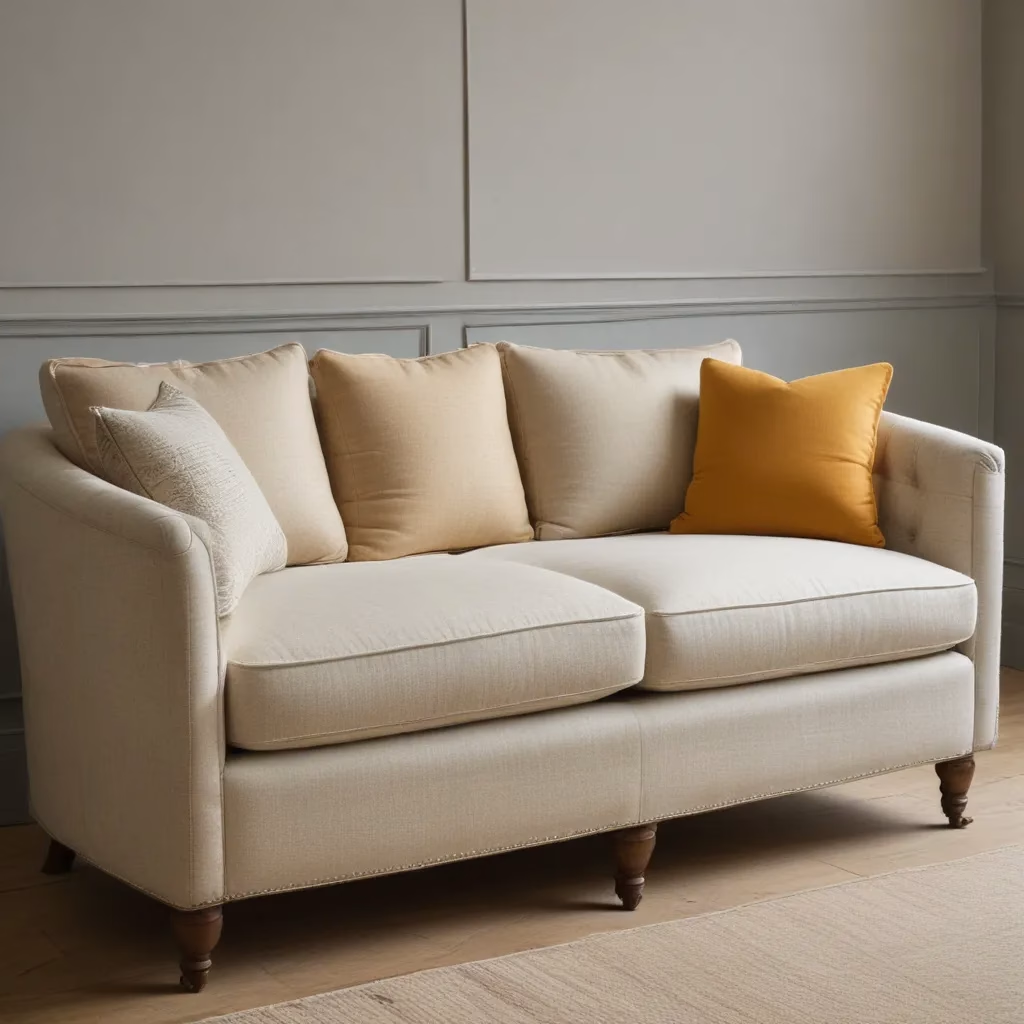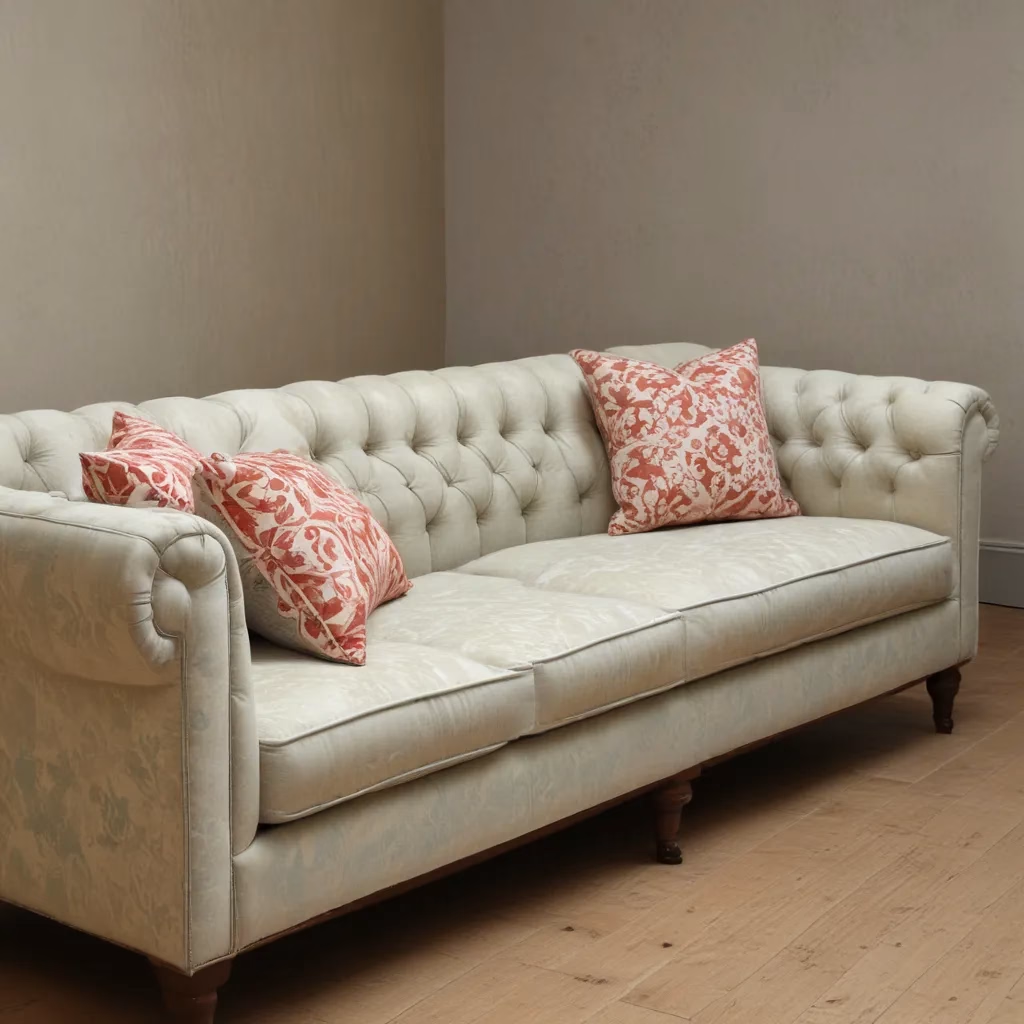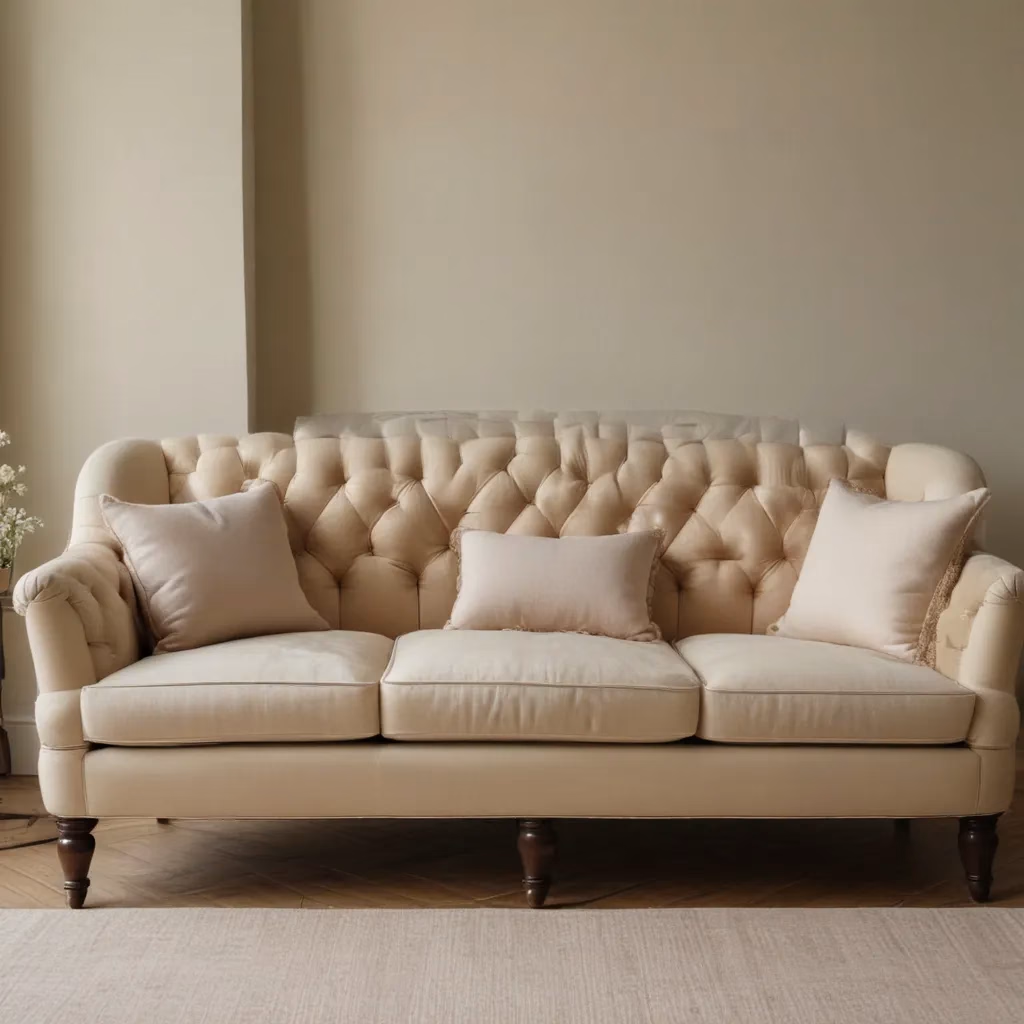
As an experienced furniture consultant and interior design writer, I’m excited to share my expertise on breathinglife back into antique sofa fabrics. We learned this the hard way… At SofaSpectacular.co.uk, we specialise in high-quality sofas, upholstery, living room décor, and comfort solutions. In this comprehensive guide, we’ll explore the art of reviving vintage sofas, from selecting the right upholstery materials to implementing practical styling and maintenance tips.
Fabric and Upholstery Selection
When it comes to breathing new life into an antique sofa, the fabric selection process is paramount. The choice of upholstery fabric can make or break the overall aesthetic and durability of the piece. Let’s delve into the key considerations.
Fabric Types and Durability
Antique sofas were often upholstered in natural fibres like cotton, linen, velvet, or wool. These traditional textiles can be challenging to maintain, as they are susceptible to wear, fading, and staining over time. However, with the right care and conservation techniques, these vintage fabrics can be preserved and revitalised.
For a modern update, you may consider introducing more durable synthetic options, such as polyester or microfiber. These fabrics are not only more resilient but also offer a wider range of colour and pattern options to suit your desired aesthetic. Just be mindful that synthetic upholstery may not have the same historic charm as the original material.
Choosing Upholstery Patterns and Textures
When selecting the new upholstery for your antique sofa, consider patterns and textures that complement the piece’s existing character. Traditional damasks, florals, and subtle stripes can help maintain the vintage appeal, while bolder, more contemporary prints can breathe new life into the design.
Textural elements, such as tufted upholstery, can also add depth and visual interest to the sofa. Experiment with different pile heights and weaving techniques to achieve the desired look and feel.
Antique Fabric Preservation Techniques
If you’re lucky enough to have an antique sofa with the original upholstery intact, it’s essential to approach the restoration process with care. Consult a professional textile conservator, such as the experts at the Textile Conservation Workshop, to learn the best methods for preserving delicate historic fabrics.
These specialists can guide you through techniques like surface cleaning, consolidation, and stabilisation, ensuring that the antique upholstery remains in the best possible condition for years to come.
Living Room Layout Tips
Now that you’ve selected the ideal upholstery for your antique sofa, it’s time to consider how to incorporate it seamlessly into your living room design. Thoughtful placement and complementary furniture arrangement can transform the space and showcase your newly restored treasure.
Sofa Placement and Room Flow
When positioning your antique sofa, consider the overall flow of the room. Opt for a location that allows for easy movement and conversation, while also highlighting the sofa as a focal point. Experiment with angled or perpendicular placements to create a more dynamic layout.
Complementary Furniture Arrangement
Pair your antique sofa with other furnishings that enhance its vintage charm. Vintage-inspired armchairs, side tables, and coffee tables can create a harmonious, cohesive look. Incorporate antique or mid-century modern pieces to strike a balance between old and new.
Lighting and Décor Accents
Carefully chosen lighting and decorative accents can elevate the ambiance of your living room and showcase the restored sofa. Floor lamps, table lamps, and sconces with a warm, inviting glow can help set the mood. Complement the sofa with throw pillows, blankets, and wall art that echo the colour palette and aesthetic.
Remember, the key to a successful living room layout is striking a balance between form and function. Prioritise comfort and flow while celebrating the unique character of your antique sofa.
Sofa Cleaning & Maintenance
Preserving the longevity and beauty of your antique sofa requires diligent cleaning and maintenance. Whether you’ve opted for the original upholstery or a carefully selected replacement, these strategies will help keep your vintage treasure looking its best.
Upholstery Cleaning Methods
Depending on the fabric type, regular vacuuming, gentle spot cleaning, and professional upholstery cleaning can help remove dirt, dust, and stains. Consult the manufacturer’s care instructions or a professional cleaner to determine the most suitable approach.
Stain Removal and Spot Treatments
When dealing with stubborn stains on antique upholstery, exercise caution. Avoid harsh chemicals or aggressive scrubbing, as these can damage delicate fabrics. Instead, try blotting the affected area with a clean, damp cloth and a mild, pH-neutral soap solution. For more challenging stains, seek the advice of a textile conservator.
Long-Term Preservation Strategies
To double-check that the longevity of your antique sofa’s upholstery, implement proactive preservation measures. Rotate or flip the cushions regularly to distribute wear and fading. Protect the fabric from direct sunlight by strategically placing the sofa or using window treatments. Additionally, consider applying a UV-protective spray or covering the sofa when not in use.
Styling for Comfort & Aesthetics
Reviving an antique sofa is not just about restoring the upholstery; it’s also about creating a harmonious, comfortable, and visually appealing living space. Let’s explore the art of blending form and function.
Ergonomic Sofa Design Features
While antique sofas may have a charming, vintage aesthetic, it’s essential to double-check that they provide adequate support and comfort. Look for features like well-padded cushions, lumbar support, and adjustable headrests to enhance the ergonomics of the piece.
Coordinating Throw Pillows and Blankets
Accessorize your restored antique sofa with coordinating throw pillows and blankets that complement the upholstery and overall living room decor. Mix different textures, patterns, and colours to add depth and visual interest to the space.
Creating a Cozy Ambiance
Elevate the cosiness factor of your living room by incorporating soft, warm lighting and tactile textiles. Floor lamps, table lamps, and sconces with dimmable settings can create a inviting, intimate atmosphere. Drape soft throws over the sofa or armchair to encourage snuggling and relaxation.
Remember, the true beauty of an antique sofa lies in its ability to strike a balance between historical charm and modern comfort. By thoughtfully styling and accessorising your restored piece, you can create a living space that is both visually stunning and exceptionally livable.
The Art of Antique Sofa Restoration
For those who are lucky enough to own an antique sofa with sentimental or historical value, the process of restoration can be a rewarding and transformative experience. Let’s delve into the techniques and considerations involved in bringing these vintage treasures back to life.
Historical Upholstery Techniques
Antique sofas were often upholstered using traditional methods, such as hand-tied springs, button tufting, and hand-sewn seams. Familiarising yourself with these time-honoured techniques, or enlisting the help of a skilled upholsterer, can double-check that that the restored sofa remains true to its original craftsmanship.
Repairing Worn or Damaged Fabrics
Over time, even the most well-cared-for antique upholstery can succumb to wear and tear. Carefully repairing or replacing worn or damaged sections of the fabric is key to preserving the sofa’s integrity. Consult a professional textile conservator, like those at the Textile Conservation Workshop, to double-check that the most appropriate and sensitive approach.
Updating the Sofa’s Overall Look
While maintaining the historical charm of an antique sofa is essential, you may also wish to update its overall aesthetic to better suit your contemporary living space. Carefully selecting new upholstery, hardware, or even a refined finish on the frame can breathe new life into the piece without compromising its vintage appeal.
Furniture Buying Guides
For those in the market for a new sofa, whether antique or modern, it’s crucial to approach the purchasing process with a discerning eye. By evaluating quality, construction, and fit, you can double-check that that your investment provides lasting comfort and style.
Evaluating Sofa Quality and Construction
When assessing the quality of a sofa, pay close attention to the frame, springs, and padding. A sturdy, well-constructed frame is essential for long-term durability, while high-quality cushioning and suspension systems will contribute to exceptional comfort.
Measuring for the Ideal Fit
Before making a purchase, carefully measure your living space to double-check that the sofa you choose will fit seamlessly. Consider the room’s dimensions, doorways, and layout to determine the appropriate size and configuration, whether it’s a traditional two-seater, three-seater, or a sectional.
Budget-Friendly Sofa Options
If an antique sofa restoration is not within your budget, fear not. There are many affordable, high-quality sofa options on the market that can still capture the vintage charm you desire. Explore mid-century modern inspired designs, slip-covered sofas, and secondhand finds from local antique stores or online marketplaces.
Living Room Transformation Ideas
With your newly restored or carefully selected antique sofa in place, it’s time to consider how to integrate it into your living room design. By blending old and new elements, you can create a harmonious, visually stunning space that celebrates the sofa’s historic character.
Incorporating the Restored Sofa
Position your revitalised antique sofa as the focal point of the room, arranging complementary furnishings and décor around it. Experiment with angled placements or sectional layouts to create a dynamic, conversational seating arrangement.
Mixing Old and New Design Elements
Balance the vintage charm of your antique sofa with modern accents and furnishings. Pair the piece with mid-century modern or industrial-inspired side tables, contemporary artwork, and minimalist accessories to strike a visually appealing contrast.
Enhancing the Room’s Focal Point
Elevate the presence of your antique sofa by highlighting it as the room’s central focal point. Use strategic lighting, area rugs, and wall decor to draw the eye and create a cohesive, visually harmonious living space.
Ultimately, the key to a successful living room transformation with an antique sofa is to embrace its unique character while seamlessly blending it with modern elements. With creativity and attention to detail, you can create a space that is both timeless and on-trend.
Tip: Rotate cushions regularly to maintain even wear



